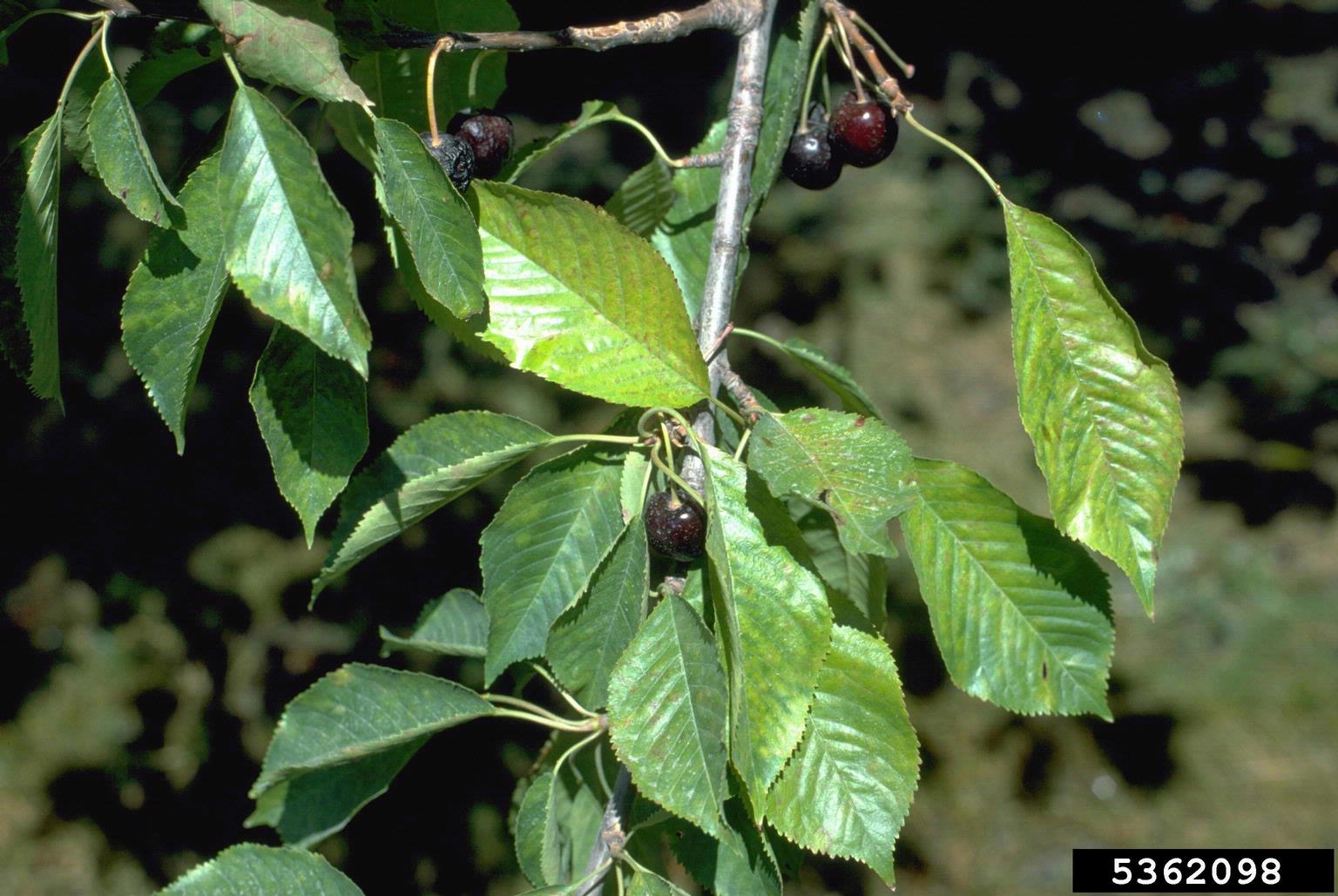What Is Necrotic Rusty Mottle Virus – Controlling Necrotic Rusty Mottle In Cherries


Spring cherry blossoms are a sign that those juicy, shiny, delicious fruits are soon on their way. Leaves form just about the same time or shortly after. If the leaves of your cherry tree are mottled yellow with necrotic lesions, these may be necrotic rusty mottle symptoms. What is necrotic rusty mottle virus? It is unknown what causes this disease, but it seems to spread slowly in orchards, giving some chance of control if the disease is diagnosed early enough.
What is Necrotic Rusty Mottle Virus?
Necrotic rusty mottle in cherries is not a common problem. However, it can occur in the sweet cherry cultivars as well as Portuguese laurel, which is also in the Prunus genus. Crop loss may occur and the vigor of the tree is diminished due to foliage loss. The disease is a virus but closely resembles many fungal issues. Fungicides will not help, though, and a cherry tree with necrotic rusty mottle virus often dies within 1 to 2 years. Leaves develop brown lesions about a month after bloom in most cases, although the disease may be present in buds as well. The infected tissue drops out of the leaf, leaving shot holes. Infected terminal buds will fail to open. In extreme cases, the leaves will die and fall from the tree. If the leaves remain attached and the disease progression is slow, they develop yellow mottling. The bark can also exhibit symptoms of darkened patches with infected sap deposits that are deeply colored and thick. Widespread defoliation often occurs in cherry trees with necrotic rusty mottle virus, causing diminished tree health.
What Causes Necrotic Rusty Mottle Virus in Cherries?
The actual causal agent hasn't been identified beyond its classification as a virus. It isn't even known what the vector might be that introduces the disease, but it is a virus in the family Betaflexviridae. The virus has been found in North America, Chile, Europe, Japan, China, and New Zealand. The disease can spread easily in orchard situations and cool, spring weather increases necrotic rusty mottle symptoms. The disease is also known to spread through infected bud or graft wood. There are resistant cultivars.
Controlling Rusty Mottle Virus
Speedy identification early in the season is crucial. Removal of leaves that exhibit signs of cankers or mottling should be removed and destroyed. Clean up dropped, diseased leaves around trees. Use resistant cultivars and avoid Lambert and Corum, which are very susceptible to rusty mottle virus. Install only certified virus-tested, disease-free trees. Unfortunately, in orchards the disease can spread to nearly all of the trees and they will have to be removed. There are no listed chemical or natural controls.
Sign up for the Gardening Know How newsletter today and receive a free copy of our e-book "How to Grow Delicious Tomatoes".

Bonnie Grant is a professional landscaper with a Certification in Urban Gardening. She has been gardening and writing for 15 years. A former professional chef, she has a passion for edible landscaping.